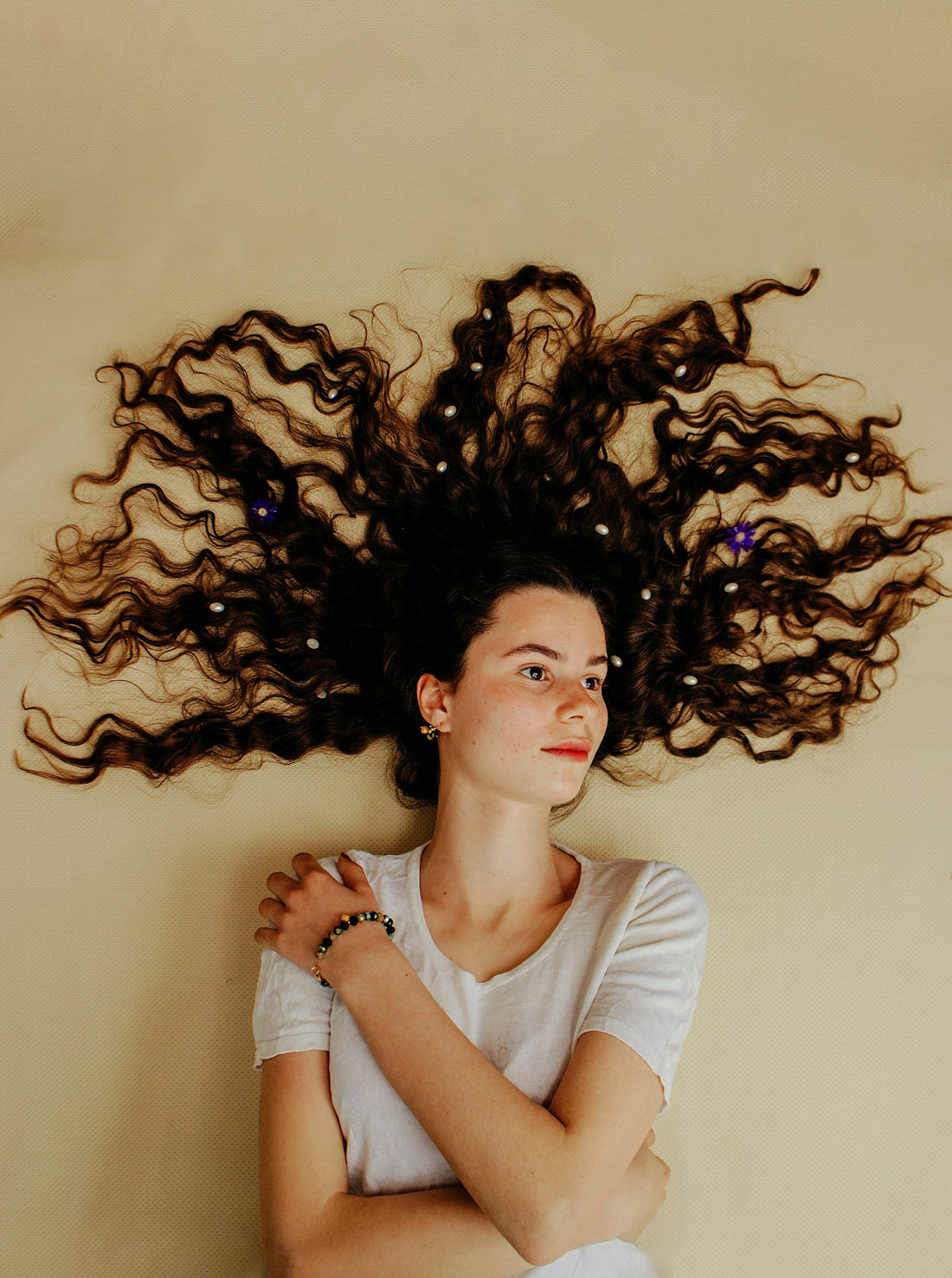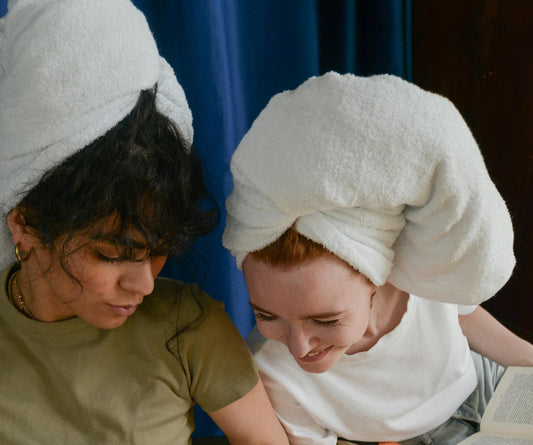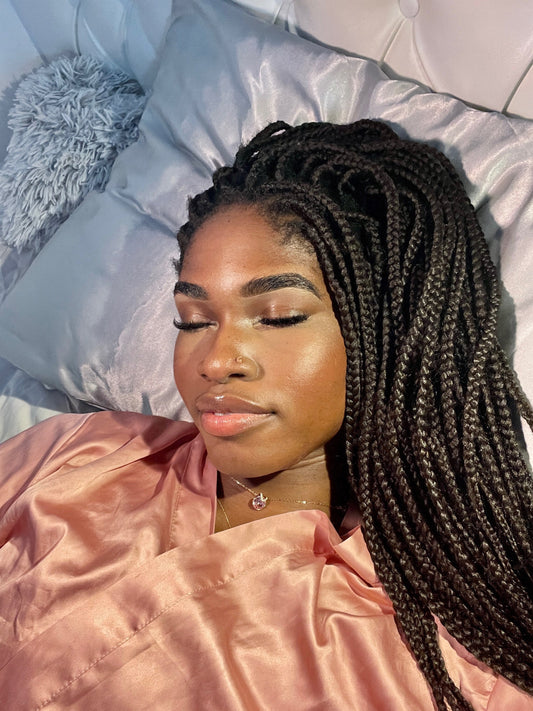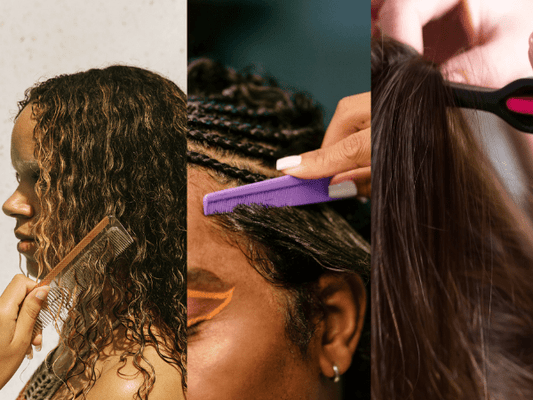Understanding Heat Damage
Heat damage occurs when high temperatures from styling tools, such as straighteners, curling irons, and blow dryers, weaken the hair's protein structure. This damage manifests in several ways, including:
- Loss of Elasticity: Curls that no longer bounce back or hold their shape.
- Increased Frizziness: Hair that becomes more prone to frizz and flyaways.
- Dry Texture: Hair that feels dry to the touch, lacking softness and moisture.
- Split Ends and Breakage: Visible thinning or splitting of hair ends, and increased shedding.
Recognizing these signs early can help you take prompt action to prevent further damage and begin the repair process.
Step 1: Trim the Damage
The first and most crucial step in repairing heat damage is to get rid of split ends and severely damaged sections of hair. This may mean sacrificing some length for the health of your hair, but a trim can prevent further damage and help your curls recover more quickly.
Step 2: Incorporate Deep Conditioning Treatments
Moisture is key to reviving damaged curls. Deep conditioning treatments, especially those formulated for curly or damaged hair, can replenish lost moisture and nutrients. Look for products rich in hydrating ingredients such as shea butter, coconut oil, and aloe vera. Applying a deep conditioner once a week can make a significant difference in your hair's texture and appearance.
Step 3: Use Protein Treatments Sparingly
While moisture is essential, protein treatments can also play a vital role in repairing heat-damaged hair. These treatments help to rebuild the hair's keratin structure. However, it's important to use protein treatments sparingly, as too much protein can make hair brittle. Opt for a treatment every 4-6 weeks, or as needed, based on your hair's condition.
Step 4: Embrace Leave-in Conditioners
Leave-in conditioners can provide ongoing hydration and protection for your curls throughout the day. They can also make detangling easier, reducing breakage during styling. Look for leave-in products specifically designed for curly or damaged hair to ensure your curls get the moisture and care they need.
Step 5: Reduce Heat Styling
To prevent further damage, it's crucial to minimize the use of heat styling tools. If you must use heat, always apply a heat protectant spray first and choose the lowest heat setting possible. Alternatively, explore heatless styling methods to achieve your desired look without compromising the health of your hair.
Step 6: Adopt Gentle Detangling Practices
Detangling heat-damaged hair requires a gentle touch to avoid causing additional breakage. Use a wide-tooth comb or your fingers to detangle, starting from the ends and working your way up to the roots. Detangle only when your hair is damp and conditioned to minimize damage.
Step 7: Hydrate and Nourish From Within
Hair health is closely linked to your overall health and diet. Ensure you're drinking plenty of water and consuming a balanced diet rich in vitamins, minerals, and antioxidants. Foods high in omega-3 fatty acids, biotin, and vitamins A and E can support hair health and help repair damage.
Step 8: Protect Your Hair at Night
Friction from pillowcases can cause additional stress on damaged curls. Protect your hair by sleeping on a satin or silk pillowcase, or wrap your hair in a satin scarf or bonnet. These smooth materials can help reduce breakage and preserve your hair's moisture.
Step 9: Be Patient and Persistent
Repairing heat damage is a gradual process that requires patience and consistency. Don't expect overnight miracles; instead, focus on maintaining a healthy hair care routine and giving your curls the time they need to recover.
Conclusion
Heat damage can be a distressing experience, particularly for those who cherish their natural curls. However, with the right approach and dedication, it's possible to repair the damage and reclaim your hair's natural beauty. By trimming damaged ends, prioritizing moisture and protein treatments, reducing heat styling, and adopting gentle hair care practices, you can gradually revive your curls. Remember, the journey to healthy hair is a marathon, not a sprint. With time and care, your curls can bounce back stronger and more vibrant than ever.











